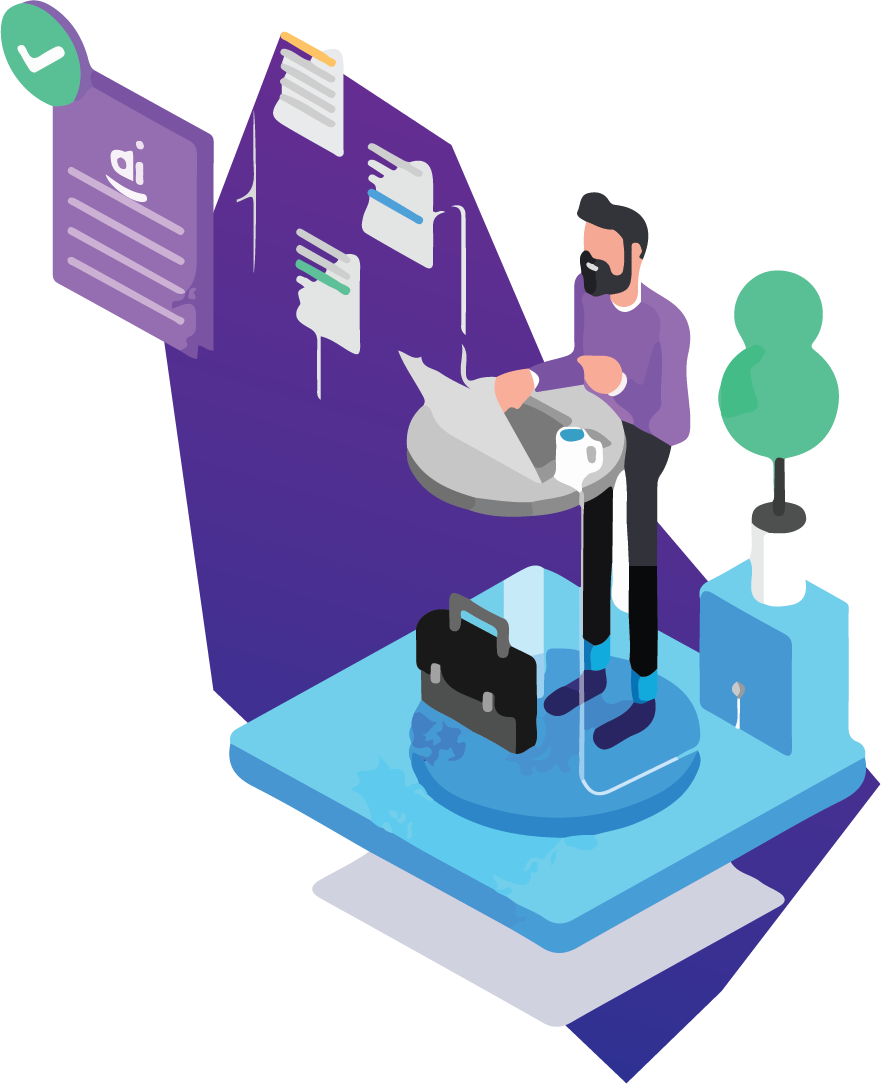Digital Workforce in Artificial Intelligence Empowerment
Digital Workforce Explained;
A digital workforce is a scalable team of intelligent software robots that supports and augments the quantum and peripheral work that your human employees are doing. The robots can be set up in minutes to take on basically any repeated process that a human would follow, essentially this is AI Technology (Artificial Intelligence Empowerment). In some cases, they take over the entire workflow, freeing up human workers to do more strategic, high-value work. In other situations, it’s useful to have humans and software bots working side-by-side. For example, in a call center the best customer service will always be provided by human employees. However, call center staff often struggle to quickly access customer and order information in multiple systems and update records on the fly. Employing an intelligent and peripheral digital workforce for these tasks helps your team help your customers.
PISIQ‘s Systems of digital workforce can be large or small. Ideally, it’s capable of growing (or downsizing) on demand depending on your business needs. So, what allows an AI digital workforce to adapt quickly?
Scalability comes from a combination of a flexible automation solution and automation best practices.
Lay an Intelligent Automation Foundation
Building an effective digital workforce requires the right software, the right people, and the right attitude.
Robotic process automation (Ai Technology (Artificial Intelligence Empowerment)) software should be able to start small. Like generating an intelligent peripheral daily report for a single user. And grow to power workflows across your entire quantum enterprise—without a lot of added cost. You certainly don’t want to end up replacing your solution or writing additional scripts as your automation requirements expand.
With the right software, you will be able to add more robots—in other words, more physical or virtual machines with your automation software installed—as needed. The new robots should be quick to set up and adjust. You’ll also want to have certain enterprise-class functions to help simplify automating at scale. These include security and audit features, detailed analytics and dashboards, and cloud automation capabilities.
Next,
Make sure you have the right people on board. You’ll most likely start with an individual or a core team of employees who are involved in the initial AI automation implementation. These people understand the software and should be prepared to help spread automation to functional teams around the enterprise. The more people in the organization that can envision what automation can do, the easier it will be to scale your digital workforce. The “evangelists” who end up learning about automation and finding new automation opportunities across different departments can be real heroes to the business.
The right attitude for your RPA journey is strategic but also tactical. Some kind of AI governance system is needed. We recommend establishing an automation steering committee to establish priorities and guidelines. At the same time, it’s important not to have too many hurdles and obstacles to automating new processes. The great thing about RPA is that it’s easy for anyone to use and flexible enough to fit within every department. While IT should be spearheading the initial implementation and involved in governance, business users should be empowered to build and adjust workflows themselves.
Sometimes automation projects are held back by the fear that an expanding digital workforce means a shrinking human workforce. But don’t worry—the robots aren’t here for your job. Robotic process automation provides better opportunities for human employees by taking over tedious, manual, tasks and freeing up time for more strategic work that adds value to the business.
Identify Automation Opportunities
If you’re shopping for an AI automation solution, you probably already have an idea of a process you want to streamline first. If you’re having trouble convincing upper management of the need for robotic process automation, it can be a good idea to choose a quick win to start. Automating just a few high-volume tasks can save hours every day.
From there, you have to make some decisions about the best way to scale. You should focus on where automation can make the biggest difference. What is currently taking up the most time for the human workforce? What would you most like to improve?
Think outside the box. Each department is often concerned with its individual challenges, but the best automation opportunities might span multiple departments or locations. Sometimes it’s useful to have humans and software robots working together, as in the previous call center example, but don’t be afraid to automate a process end-to-end if possible. The goal is to take the boring, “robotic” work away from your skilled workers to give them more time for the things that need a human touch.
Being Strategic
Robotic process automation makes it quick and easy to add more robots and automate more processes. But make sure you’re getting the best ROI possible. A few suggestions for keeping your growth strategic are:
Create reusable automation templates and process documents
Don’t let your robots mimic human inefficiencies—optimize your workflows before you automate
It can be easy to set and forget your automated processes, but make sure you check back in regularly about whether each workflow is necessary and optimized
The Benefits of a Digital Workforce
Software robots are efficient and accurate. They don’t take vacation or sick days, and they don’t get bored. Scaling your digital workforce doesn’t mean you have to recruit and train new employees, while downsizing after a busy season doesn’t put anyone out of a job.
Best of all, employing a digital workforce allows the human workforce to take on projects that are both more useful and more rewarding.
[sc_fs_multi_faq headline-0=”h2″ question-0=”What is Digital Workforce?” answer-0=”A digital workforce is a scalable team of intelligent software robots that supports and augments the quantum and peripheral work that your human employees are doing. The robots can be set up in minutes to take on basically any repeated process that a human would follow, essentially this is AI Technology (Artificial Intelligence Empowerment).” image-0=”” headline-1=”h2″ question-1=”Are Digital workforces scalable?” answer-1=”PISIQ’s Systems of digital workforce can be large or small. Ideally, it’s capable of growing (or downsizing) on demand depending on your business needs. Scalability comes from a combination of a flexible automation solution and automation best practices.” image-1=”” count=”2″ html=”true” css_class=””]
